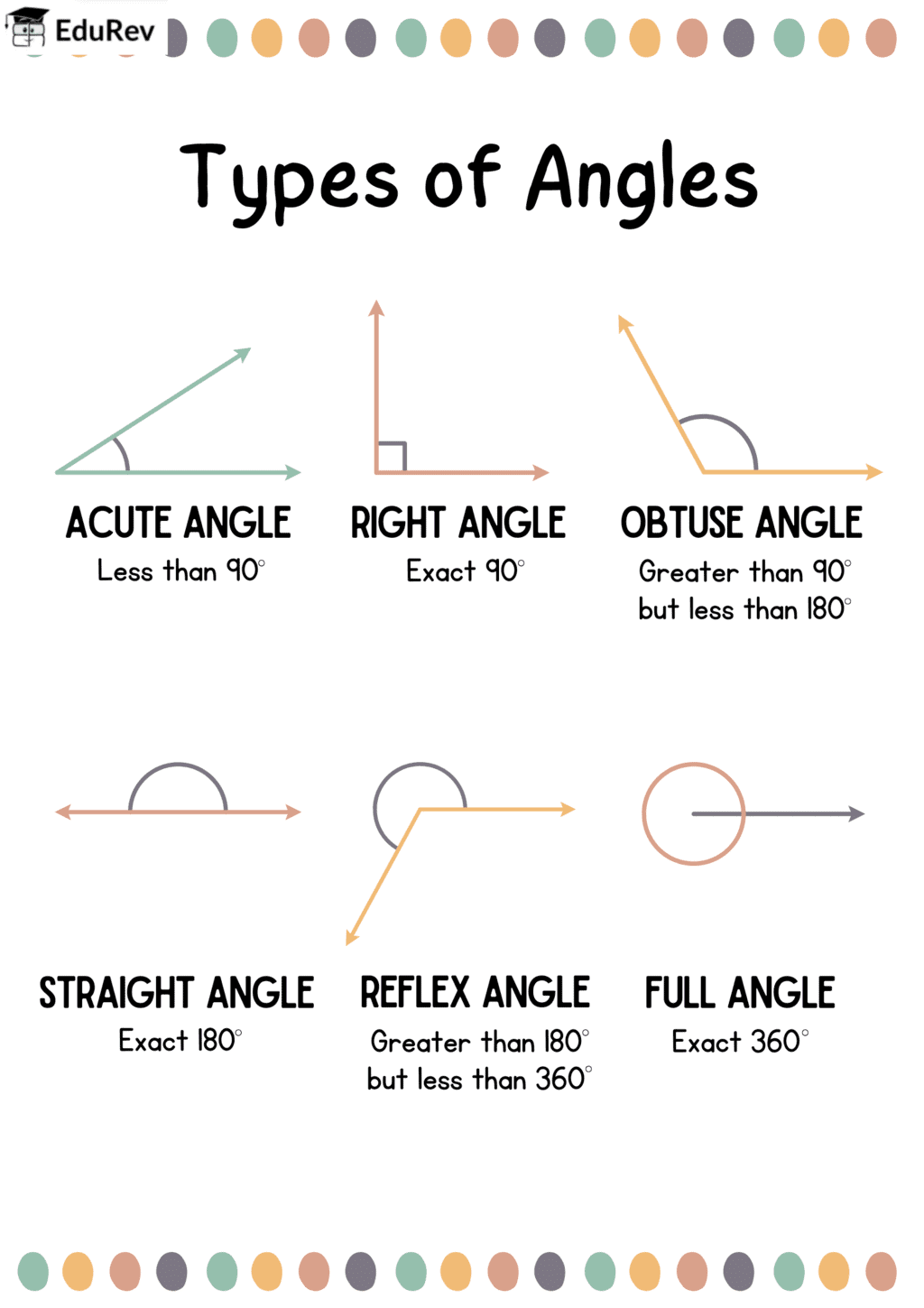Class 5 Exam > Class 5 Notes > Mathematics for Class 5: NCERT > Poster - 1: Shapes and Angles
Poster - 1: Shapes and Angles | Mathematics for Class 5: NCERT PDF Download

The document Poster - 1: Shapes and Angles | Mathematics for Class 5: NCERT is a part of the Class 5 Course Mathematics for Class 5: NCERT.
All you need of Class 5 at this link: Class 5
|
31 videos|286 docs|45 tests
|
FAQs on Poster - 1: Shapes and Angles - Mathematics for Class 5: NCERT
| 1. What are the different types of angles and how are they classified? |  |
Ans. Angles can be classified into several types based on their measurements. The main types include acute angles (less than 90 degrees), right angles (exactly 90 degrees), obtuse angles (greater than 90 degrees but less than 180 degrees), straight angles (exactly 180 degrees), and reflex angles (greater than 180 degrees). Understanding these classifications helps in identifying angles in various shapes.
| 2. How do you measure angles accurately using a protractor? |  |
Ans. To measure an angle using a protractor, first, place the midpoint of the protractor's straight edge at the vertex of the angle. Align one ray of the angle with the zero line of the protractor. Then, read the number where the other ray intersects the protractor scale. Ensure to check whether the angle is acute or obtuse to select the correct scale for reading.
| 3. What is the relationship between angles and shapes in geometry? |  |
Ans. In geometry, shapes are defined by their angles and sides. The sum of the interior angles of a shape can help determine what kind of polygon it is. For example, a triangle has a total interior angle sum of 180 degrees, while a quadrilateral has 360 degrees. This relationship is crucial for solving problems related to the properties of various geometric figures.
| 4. How can angles be used in real-life applications? |  |
Ans. Angles are used in various real-life applications, such as in construction, where precise angles are critical for structural integrity. In navigation, angles help determine directions and locations. Additionally, angles play a role in sports, design, and art, where understanding the relationship between angles can enhance performance and aesthetics.
| 5. What are complementary and supplementary angles? |  |
Ans. Complementary angles are two angles that add up to 90 degrees, while supplementary angles are two angles that sum to 180 degrees. These concepts are important in solving problems involving angle relationships and can be applied in various geometric proofs and constructions. Understanding these terms is essential for mastering angle-related questions in exams.
Related Searches
















